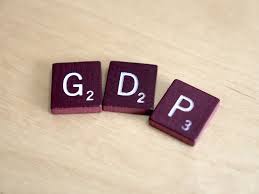 The economy in the U.S. expanded at a much slower pace late in 2013 than what was estimated initially, a sign of little growth amidst foul weather and softer demand overseas for products from the U.S.
The economy in the U.S. expanded at a much slower pace late in 2013 than what was estimated initially, a sign of little growth amidst foul weather and softer demand overseas for products from the U.S.
The gross domestic product, the country’s broadest measure of goods and services made across the entire economy, expanded an adjusted seasonally annual rate of just 2.4% for the fourth quarter of 2013, announced the Department of Commerce on Friday. The rate was originally posted at 3.2%.
Nevertheless, financial markets moved very little following the new data on Friday. The economy in the U.S. surged during the third quarter of 2013, expanding at a 4.1% rate and the first reading of the fourth quarter raised hopes for stronger growth, better wages and more jobs for 2014.
While severe winter weather might have delayed or depressed some economic activity, the poorer than expected numbers have increased concerns about the economy’s strength during the start of the year.
The new report on Friday showed that consumers continued driving growth though not at the rate initially thought. Personal expenditures, adjusted for current inflation, were up 2.6% during the quarter, which was below the initial estimate of 3.3%.
Exports were also weaker than anticipated though the group was still up 9.4% compared to its initial results released of 11.4%.
Investment in housing flagged in the quarter, while spending cuts by the government weight on the growth of the company.
A bright spot was business spending with companies making investments in more buildings and equipment. Overall, fixed nonresidential investment increased by 3.8%. The gain could be a sign for optimism for more growth in the near future.
Last month the Federal Reserve noted a pickup in economic activity over recent quarters, but these latest numbers suggest growth might not be at the robust the U.S. central bank originally thought.
